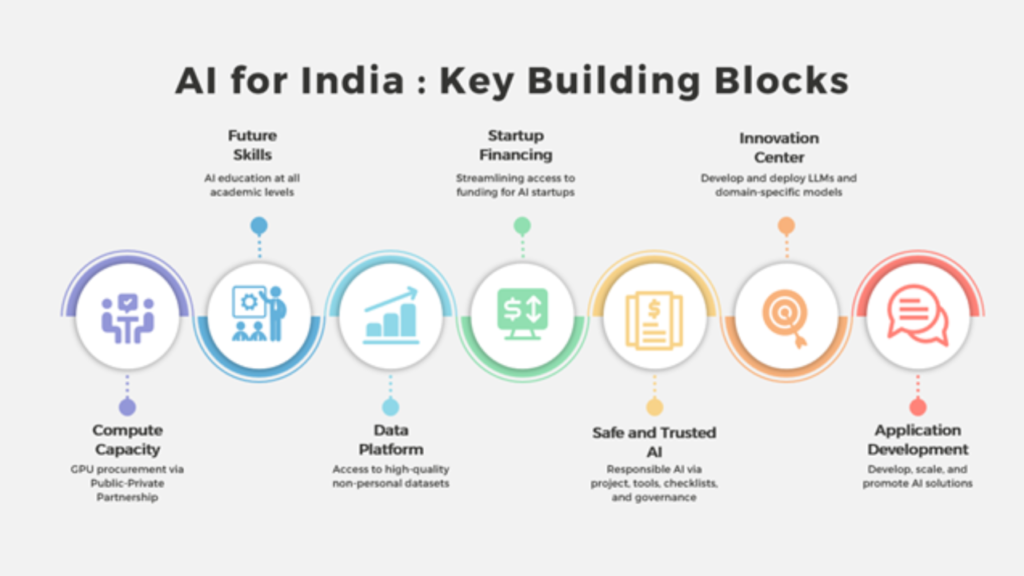In today’s fast-changing world, technology education is key to India’s sovereignty. It is not just about learning how to code or build apps; it is about building a strong, independent, and secure nation. The future of India’s economy, defense, governance, and innovation depends on how well we prepare our young minds in science, technology, engineering, and mathematics (STEM).
In this article, we will explore why technology education is key to India’s sovereignty, how it affects different parts of the country’s development, and what needs to be done to make it stronger.
1. Technology Education Builds National Security

A country that depends on foreign countries for technology is always at risk. From cybersecurity to defense systems, India needs homegrown experts who can develop and manage advanced technologies. Without proper technology education, India may be forced to buy expensive software, defense equipment, and data systems from other countries, leaving us vulnerable.
The recent rise in cyberattacks across the globe shows how crucial it is to train Indian youth in digital defense. A strong workforce in AI, blockchain, robotics, and ethical hacking ensures that India can protect its infrastructure, data, and privacy from foreign threats.
2. Boosts Economic Independence
Technology-driven industries are the backbone of modern economies. By investing in technology education, India can create millions of skilled jobs in IT, manufacturing, automation, and research sectors. When people are skilled in high-tech fields, they create their own startups, generate employment, and reduce the nation’s dependence on foreign companies.
India’s rise as an IT hub is proof that tech education pays off. However, with growing competition from countries like China, Vietnam, and Indonesia, India must double its efforts in tech skill development to remain globally competitive.
3. Drives Innovation and Self-Reliance
To be truly sovereign, India must create, not copy. Innovation is born out of education. With more students trained in tech fields, India can develop its own software, machines, medicines, and green energy solutions.
This self-reliance ensures India is not at the mercy of other nations during global crises like pandemics or trade wars. Initiatives like Atmanirbhar Bharat will succeed only if our citizens are well-educated in science and technology.
4. Reduces Brain Drain
One major challenge India faces is brain drain — bright students going abroad for better education and job opportunities. The root of this issue lies in the lack of quality tech education and research facilities in India.
When we build world-class technology institutions and offer exciting opportunities in R&D, innovation, and entrepreneurship, Indian talent will stay in the country and contribute to its growth.
5. Empowers Rural and Underprivileged Communities
Technology education should not be limited to urban elite schools. Bringing tech learning to rural and low-income areas can change lives. It opens doors to better jobs, online businesses, freelancing, and problem-solving skills.
With proper digital infrastructure and training, young minds from villages can compete globally. This strengthens India’s unity, equality, and economic power — all vital aspects of sovereignty.
6. Supports Sustainable Development
India is facing major challenges — from climate change to energy needs to pollution. Technology education trains people to create smart, green, and sustainable solutions. Whether it’s solar-powered villages, electric vehicles, or eco-friendly farming tech, education in these areas is the first step.
A sovereign nation must be able to solve its own problems, and that’s only possible if its citizens understand and use technology wisely.
7. Helps Shape Future Global Leaders
India has the potential to lead the world in the digital revolution. From space exploration to fintech, from quantum computing to biotech, India is making its mark. But to become a global tech superpower, our education system must evolve.
We need more focus on hands-on learning, critical thinking, problem-solving, coding from an early age, and partnerships between schools and tech companies.
Challenges to Achieving Tech-Sovereignty

Despite the importance, India faces several roadblocks:
- Outdated curriculum in many schools and colleges
- Lack of trained teachers in advanced technologies
- Low access to internet and devices in rural areas
- Gender gaps in STEM education
- Low investment in R&D and labs
To overcome these, the government and private sector must work together. Programs like Digital India, Skill India, and National Education Policy 2020 are steps in the right direction but need faster and wider implementation.
What Needs to Be Done
To ensure that technology education remains the key to India’s sovereignty, here’s what the country must focus on:
- Make coding, AI, and robotics part of school syllabus
- Invest in teacher training for modern technologies
- Build more tech-focused universities and research centers
- Offer scholarships and incentives for tech students, especially girls and rural youth
- Encourage public-private partnerships for real-world learning
- Support startups and innovation labs in every state
- Make internet and devices affordable for all
Conclusion
Technology education is no longer optional — it is the backbone of a sovereign India. A nation that controls its own technology controls its own future. From defense to jobs to innovation, technology education is key to India’s sovereignty. The more we invest in this area, the stronger and more independent India will become on the world stage.
Let us build a future where every Indian child, no matter where they live, gets access to world-class technology education — because that is the true power of a sovereign nation.
Also Read – Powerful Reasons Dhahran Tourism Project Will Boost Economy


